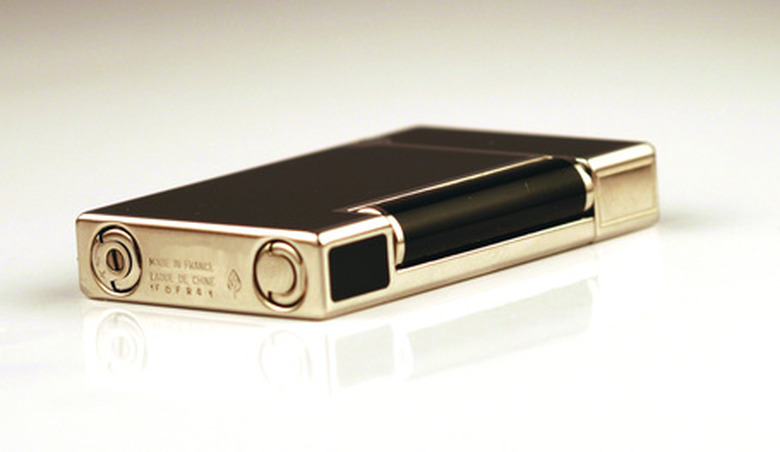How To Unclog Butane Lighters
Things Needed
-
Small stiff-bristle brush
-
Wooden match
-
Can of compressed air
-
Triple-refined butane gas
-
Fine fishing wire
Although ordinary lighters are reliable, many pipe smokers prefer to avoid the aftertaste left by liquid fuel by using clean-burning butane lighters. Unfortunately, unless triple-refined butane fuel and the correct filling procedures are used, even the most expensive butane lighters tend to become clogged from time to time. Clogging is caused by using unrefined fuel, together with blow-back of volatiles when holding the flame over a pipe bowl during the prolonged lighting process. Consequently, periodic cleaning and nozzle unclogging is necessary.
Step 1
Clean the flint wheel and the nozzle by brushing them with a small, specially designed stiff-bristled brush.
Step 2
Push the end of a wooden match against the filler valve on the base of the lighter to purge it. You'll hear a hissing noise as the gas escapes. Repeat until the lighter is empty.
Step 3
Press the plastic nozzle extension tube attached to a can of compressed air against the lighter gas outlet valve. Hold the canister plunger down for one or two seconds. Move the extension tube back an inch or two to blow remaining residue from the lighter recess. Refill the lighter with triple-refined butane gas, and test.
Step 4
Unwind a strand from a piece of fine fishing tracer wire. Poke the end of the fine strand into the lighter nozzle if blasting with compressed air fails. Do not apply sideways pressure or work the hardened steel wire back and forth; this will ream out and deform the nozzle outlet. Apply a second blast from the compressed air canister. Retest.
Tip
Stiff-bristle brushes used to unclog the lighter are available from tobacconists.
Always purge the lighter before charging with butane gas.
Never light a candle with a butane cigarette lighter; the volatile, wax-rich combustion gases from the candle will clog both the flint wheel and the nozzle.
